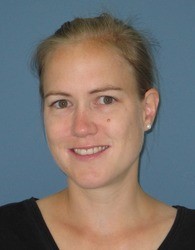Die Schweizerische Lungenstiftung kann 2023 bereits auf 35 Jahre erfolgreiche Tätigkeit für gesunde Lungen und saubere Luft zurückblicken.
Aus Dankbarkeit über die Unterstützung seines Medizinstudiums durch ein Stipendium des Kantons Zürich und die grosse Chance einer von der Stadt New York bezahlten zweijährigen Weiterbildungsstelle zum Lungenarzt am Bellevue Hospital wollte Otto Brändli davon etwas für die Aus- und Weiterbildung von Lungenärzten und für die Lungenkranken »zurückgeben». Er konnte dazu auch die ihm als Präsident der Zürcher Lungenliga zustehende Entschädigung und seine Nebeneinnahmen als Chefarzt in der Zürcher Höhenklinik Wald für gesunde Lungen einsetzen.
Nach seinem Entscheid nach einer «Midlife-Krise» im Jahre 1986, weiter als Chefarzt in Wald zu arbeiten und nicht mehr zurück ans Universitätsspital nach Zürich wechseln, liess er deshalb diese gemeinnützige Stiftung errichten.
Read more: 35 Jahre Schweizerische Lungenstiftung (Swiss Lung Fundation)
 Die Zürcher Höhenklinik, heute RehaZentrum Wald, steht an einem Wendepunkt: soll sie nach 125 Jahren an ihrem idealen Standort in 900 m Höhe auf dem Faltigberg festhalten oder näher zu einem Akutspital ins Flachland verlegt werden?
Die Zürcher Höhenklinik, heute RehaZentrum Wald, steht an einem Wendepunkt: soll sie nach 125 Jahren an ihrem idealen Standort in 900 m Höhe auf dem Faltigberg festhalten oder näher zu einem Akutspital ins Flachland verlegt werden?
1898 als Tuberkulose Sanatorium eröffnet, wurde sie nach Mitte des 20. Jahrhunderts zu einer Lungenklinik und seit den 1970er Jahren zu einer anerkannten Rehabilitationsklinik umgebaut.
Rehabilitation ist eine neuere Medizinsparte wie die Geriatrie oder Palliativmedizin.
Nicht die kaum mehr mögliche Heilung sondern die Linderung der Beschwerden, die Verbesserung der Funktionen und die Wiedereingliederung des Patienten stehen im Vordergrund.
Ein anderer Ansatz als in der Akutmedizin, der ein Umdenken aller Behandelnden notwendig macht.
Diese Herausforderungen schildert das Buch am Beispiel der Biographie des Chefarztes Otto Brändli, der die Klinik während 31 Jahren bis 2007 geleitet hat und als Walder Bürger ihr Schicksal weiter mit Interesse verfolgt.

Als Chefarzt wirkte er von 1977 bis 2007 in der Zürcher Höhenklinik in Wald. Er war 25 Jahre Präsident der Lungenliga Zürich und ist heute Präsident der Schweizerischen Lungenstiftung. Er setzt sich ein für eine gesunde Atemluft und für die Bekämpfung der Tuberkulose und unterstützt die Ausbildung von Lungenärzten und medizinischen Fachpersonen, auch in Äthiopien und in Kirgistan.
 Otto Brändli hat seit Februar 2020 ein Corona-Tagebuch geschrieben und jetzt liegt es in gedruckter Form vor: seine Gedanken über Bücher, Politik und Philosophie und natürlich auch über seine Überlegungen zu Covid.
Otto Brändli hat seit Februar 2020 ein Corona-Tagebuch geschrieben und jetzt liegt es in gedruckter Form vor: seine Gedanken über Bücher, Politik und Philosophie und natürlich auch über seine Überlegungen zu Covid.
In der Internet Buchhandlung seiner Frau Therese, auf www.buchland.ch kann es zum Preis von Fr. 30.00 plus Porto
Otto Brändli has published his Corona-diary since February 2020. It shows not only his thoughts about the Covid- pandemic but as well his ideas about books, politics and philosophy.
It can be ordered from the internet-bookstore of his wife Therese on www.buchland.ch. Just click on
Every year, the Swiss Foundation for Tuberculosis Research awards the Swiss TB Award for outstanding work by Swiss researchers.
The two winners this year are Nina T. Odermatt from the EPFL Lausanne and Tobias Broger from the Swiss non-profit organisation FIND.
New generation urine test improves TB diagnosis in people living with HIV

The Fujifilm SILVAMP TB LAM test, or FujiLAM, is the first of a new generation of rapid diagnostic tests for the identification of TB in people co-infected with HIV. Working in a similar way to a pregnancy test, FujiLAM detects low concentrations of lipoarabinomannan (LAM) in the urine of people with TB and HIV co-infection. Urine samples are easy to collect from people of all ages, which is especially relevant for those with HIV who may often face difficulties in producing sputum (the usual sample needed for TB tests). FujiLAM has shown promise following an encouraging diagnostic accuracy evaluation using biobanked (frozen) urine samples from hospitalized patients with HIV, and these findings were presented in a study published in the journal Lancet Infectious Diseases. The study found that the test is substantially (28%) more effective at identifying TB in people who are HIV positive than the only existing alternative urine test. Rapid and accurate diagnosis of TB is critical to enable patients to start treatment on time, reduce deaths due to TB, and prevent further transmission of the disease. The test is now being evaluated in large studies in more than ten countries, which will help to generate the data needed for evaluation by the World Health Organization (WHO).
SILVAMP TB LAM was developed by a FIND-led international R&D consortium including Fujifilm, Rutgers University, the University of Alberta, Otsuka and the University of Cape Town, supported by the Global Health Innovation Technology Fund (GHIT), the Bill & Melinda Gates Foundation, and the governments of Germany, the Netherlands, UK and Australia.
Broger T, Sossen B, du Toit E, Kerkhoff AD, Schutz C, Ivanova Reipold E, Ward A, Barr DA, Macé A, Trollip A, Burton R, Ongarello S, Pinter A, Lowary TL, Boehme C, Nicol MP, Meintjes G, Denkinger CM. Novel lipoarabinomannan point-of-care tuberculosis test for people with HIV: a diagnostic accuracy study. Lancet Infect Dis 2019;19:852–861. doi:10.1016/S1473-3099(19)30001-5.
Broger T, Sossen B, du Toit E, Kerkhoff AD, Schutz C, Ivanova Reipold E, Ward A, Barr DA, Macé A, Trollip A, Burton R, Ongarello S, Pinter A, Lowary TL, Boehme C, Nicol MP, Meintjes G, Denkinger CM. Novel lipoarabinomannan point-of-care tuberculosis test for people with HIV: a diagnostic accuracy study. Lancet Infect Dis. 2019;19: 852–861. doi:10.1016/S1473-3099(19)30001-5
École Polytechnique Fédérale de Lausanne, Global Health Institute, Station 19, 1015, Lausanne, Switzerland.

Mycobacterium tuberculosis (Mtb) has specifically adapted to a lifestyle inside its host cell to remain undetected by the immune system for many years. The exact timing of host-cell entry, dormancy, internal cell division and therefore virulence is crucial for Mtb’s success. An important part thereof is the tight regulation of gene expression, mediated by transcription factors.
Here, we investigated one of these transcription factors, the mycobacterial Integration Host Factor (mIHF). We found that the mIHF protein was present throughout the cycle and was very stable inside the bacterial cell. mIHF was essential for the survival of the pathogen, as Mtb without mIHF could not grow anymore.
Mtb cells with a very low concentration of mIHF showed an aberrant phenotype of elongated cells twice the length as normal, which were not able to divide or form a septum. This protein further bound over 150 times to the DNA, often close to another transcription factor, EspR. While most transcription factors regulate less than ten genes, mIHF strongly affected expression of more than 200 genes, which equals about 5% of all genes in Mtb.
Many of these target genes are part of the DNA synthesis machinery, code for tRNAs important in protein synthesis, or are part of virulence pathways. Strikingly, the genes espACD were the most downregulated ones, themselves important for Mtb’s special secretion system and its high virulence. Overall, the characterization of mIHF added an important piece towards deciphering the complex gene regulatory mechanisms in Mtb.
NinaT.Odermatt, Claudia Sala, Andrej Benjak & StewartT. Cole
Essential Nucleoid Associated Protein mIHF (Rv1388) Controls Virulence and Housekeeping Genes
in Mycobacterium tuberculosis
Nature Scientific Reports 8, 1–14 (2018) DOI:10.1038/s41598-018-32340-2
NinaT.Odermatt, Claudia Sala, Andrej Benjak & StewartT. Cole
Essential Nucleoid Associated Protein mIHF (Rv1388) Controls Virulence and Housekeeping Genes
in Mycobacterium tuberculosis
Nature Scientific Reports 8, 1–14 (2018) DOI:10.1038/s41598-018-32340-2

Press release: ![]() Ally-Science_2019_PRESS_RELEASE_20190430.pdf123.46 kB
Ally-Science_2019_PRESS_RELEASE_20190430.pdf123.46 kB
Real-time data on pollen exposure is available for the first time in Switzerland. This is gathered on the Ally Science app, which has already found widespread use among allergy sufferers.
The already commonly used Ally Science app provides those who suffer from allergies with not only information on pollen exposure, but also now a symptom development report and a more precise symptom survey. As another recent addition, users can also now view the pollen concentration in Biel and Lucerne in real time. Other regions are due to be added.
The Ally Science app was launched in April 2018 by the Bern University of Applied Sciences (BFH) and University Hospital Zurich (USZ) to serve as the core component in Switzerland’s largest ever study into pollen. The app now features brand new functions. The most significant addition has been made possible by the Poleno – a measuring device from Lucerne-based start-up Swisens. It detects the current concentration of pollen in the air of the local surroundings, focusing specifically on the types of pollen most relevant to allergy sufferers. This represents a major breakthrough: The measuring method that had been used until now is based around identifying and counting pollen manually.
Consequently, it takes a couple of days before the measurement results are available.
The Ally Science app shows how much pollen and which types of pollen are currently in the air – initially for the cities of Biel and Lucerne, where a Poleno unit has been installed. Based on the tests so far, Swisens CEO Erny Niederberger is confident "that the devices will deliver high-quality real-time data." The data can be viewed on the app in the form of a map. It also shows the regions in which app users are currently registering symptoms, which can be done quickly and easily by swiping into the app's allergy diary. To allow for a more detailed analysis of symptoms, users are now asked to specify whether their allergy symptoms were experienced indoors or outdoors. Allergy sufferers can use the map to decide whether or not they wish to take preventative measures.
Another useful new feature of the app is a symptom development report for users, which can be exported as a PDF if required for a medical appointment. There is also a development display so users can track their symptoms across the entire year. Users who had been entering data into the app in 2018 will see a second curve indicating last year's pattern. This is hugely valuable for a potential medical consultation, particularly with reference to recommending treatment. Further to this, a link takes users straight to tips for pollen allergy sufferers found on the app from the aha! Swiss Allergy Centre.
Plans for 2020 include offering real-time pollen data for more regions, as well as a personalised pollen early warning indicator. Another reason to start using the Ally
Science app now. After all, the more allergy sufferers record their symptoms regularly, "the more detailed findings can be fed into the early warning system," explains Professor Serge Bignens, Head of the BFH Institute for Medical Informatics.
Ally Science – Pollen study conducted with and in the interest of allergy sufferers The Swiss Ally Science study project is reliant on the involvement of people with allergies. They can record their symptoms using the Ally Science app, which is available in five languages. The data is stored on the secure, user-specific MIDATA platform and incorporated into the pollen study in anonymised form. Around 8000 people contributed more than 24,000 symptom entries during the 2018 pollen season, including information on the frequency of individual symptoms. In the second phase of the project, which is now under way, the inclusion of real-time pollen data facilitates the analysis of links between symptoms recorded and the pollen actually present. The aim of the study is to develop pollen early warning systems and to improve advice and treatment.
For more information and photographs or to download the Ally Science app, visit:
Contacts for questions and interviews:
Ally Science app and MIDATA platform: Professor Serge Bignens, Institute for Medical Informatics I4MI, Bern University of Applied Sciences BFH, Biel,
Allergy study: Professor Peter Schmid-Grendelmeier, Allergy Station, Dermatology Clinic, Zurich University Hospital,
Real-time pollen measurement: Erny Niederberger, Swisens AG, Lucerne,
Ally Science is made possible by the support of the following project partners:

Medienmitteilung: ![]() Swiss-TB-Award-2018.pdf87.13 kB29/03/2019, 12:43
Swiss-TB-Award-2018.pdf87.13 kB29/03/2019, 12:43
Die Schweizerische Stiftung für Tuberkuloseforschung vergibt seit 2002 jedes Jahr den mit CHF 10'000 dotierten Swiss TB Award für herausragende Arbeiten von Schweizer Forschenden. Die diesjährigen Preisträgerinnen sind Frau Kathrin Zürcher und Frau Marie Ballif vom ISPM in Bern mit ihrer soeben in der Zeitschrift Lancet publizierten wichtigen Arbeit über die Bedeutung einer korrektiven Testung der Tuberkuloseerreger auf Medikamentenresistenz auf die Behandlungsergebnisse. Dies hat insbesondere bei mehrfachresistenten (MDR) oder gänzlich resistenten (XDR) Tuberkulosekranken einen entscheidenden Einfluss auf ihr Überleben.
The study, which was published just on the World TB Day 2019 in Lancet Infect Dis, resulted from a large collaborative project between the Institute of Social and Preventive Medicine (ISPM) of the University of Bern, the Swiss Tropical and Public Health Institute in Basel and the Institute of Medical Microbiology (Swiss National Center for Mycobacteria) in Zurich.
This project was funded by the Swiss National Science Foundation and the US National Institutes of Health. The overarching aim was to compile a Mycobacterium tuberculosis strain collection from HIV co-infected and HIV negative individuals in eight low- and middle-income countries worldwide, and to study the mechanisms underlying M. tuberculosis drug resistance. We reported on the challenges to diagnose and treat drug-resistant TB in resource-limited settings. Inaccurate drug susceptibility tests (DST) leading to inappropriate treatment contributes to the high mortality associated with drug-resistant TB. Local access to accurate and rapid DST of anti-TB drugs is required to improve outcomes in patients with drug-resistant TB.
Drug susceptibility testing and mortality in patients treated for tuberculosis in high-burden countries: a multi-centre cohort study
Kathrin Zürcher , Marie Ballif, Lukas Fenner, Sonia Borrell, Peter M. Keller, Joachim Gnokoro, Olivier Marcy, Marcel Yotebieng, Lameck Diero, E. Jane Carter,…...
Sebastien Gagneux, Erik C. Böttger and Matthias Egger, on behalf of the
International Epidemiology Databases to Evaluate AIDS consortium
Lancet Infect Dis 2019; 19:298-307